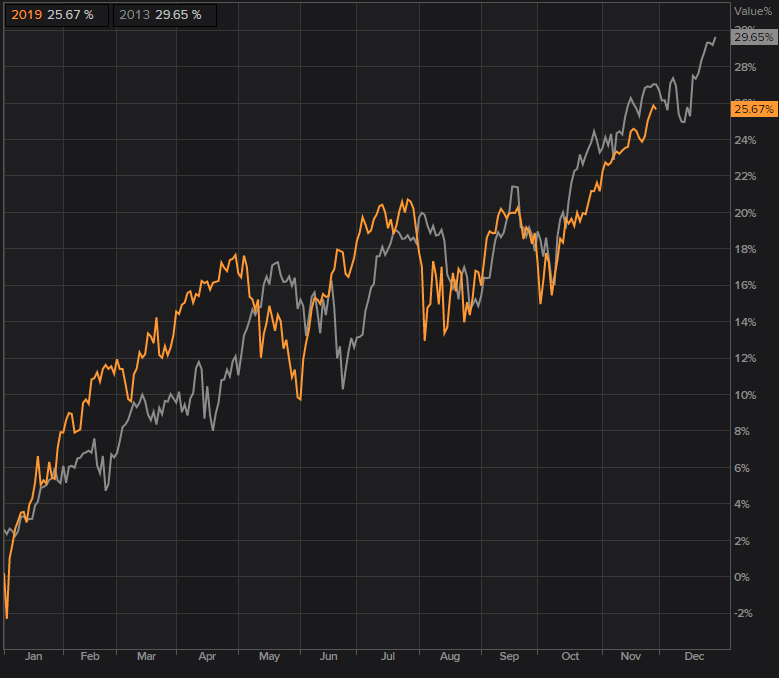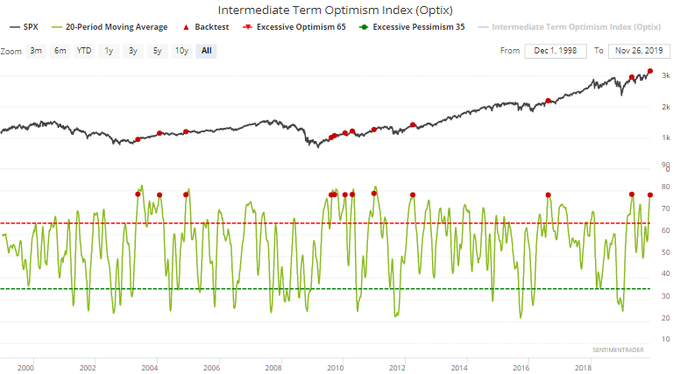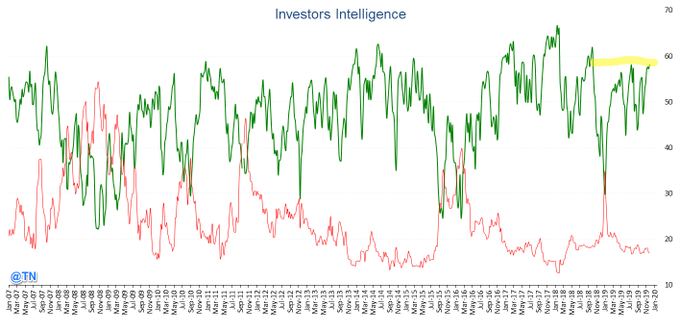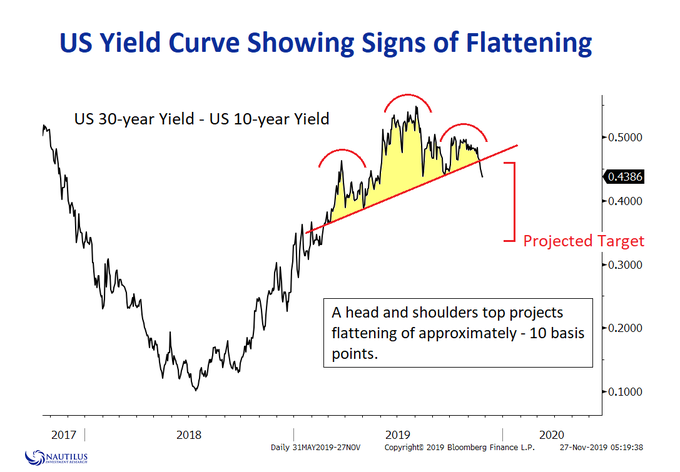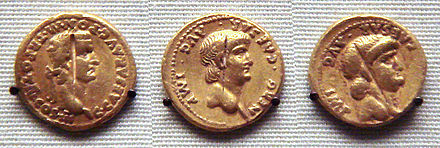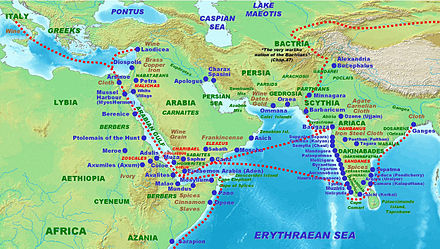Summary – A top-down review of interesting calls and comments made last week in Treasuries, monetary policy, economics, stocks, bonds & commodities. TAC is our acronym for Tweets, Articles, & Clips – our basic inputs for this article.
Editor’s Note: In this series of articles, we include important or interesting Tweets, Articles, Video Clips with our comments. This is an article that expresses our personal opinions about comments made on Television, Tweeter, and in Print. It is NOT intended to provide any investment advice of any type whatsoever. No one should base any investing decisions or conclusions based on anything written in or inferred from this article. Macro Viewpoints & its affiliates expressly disclaim all liability in respect to actions taken based on any or all of the information in this article. Investing is a serious matter and all investment decisions should only be taken after a detailed discussion with your investment advisor and should be subject to your objectives, suitability requirements and risk tolerance.
1.Finally a decline & one that is good?
Finally, a down day in US stock indices. The catalyst for Friday’s decline was concern about China’s reaction to President Trump signing the Hong Kong bill. But was that decline actually a positive in that it forestalled an exhaustion signal? That was the view Tom DeMark expressed to BTV’s Alix Steel on Friday before 9:00 am.
But why was he disappointed that the S&P futures were down pre-market on Friday? Because he was ready to announce the final exhaustion signal in the recent S&P rally. Had the S&P rallied on Friday, ideally to a new all-time high, he would have said the market top was in. Unfortunately for him, the S&P fell on Friday before the final signal was triggered.
But he wasn’t too disappointed because he expects an exhaustion signal to come on a rally on Monday or Tuesday. Well, he might be disappointed again if the 2013 parallel chart from The Market Ear proves correct:
Because this chart suggests a decline in the S&P next week to follow Friday’s decline; not just a decline for a couple of days but almost into mid-December before the final explosion up. And what might trigger that final squeeze upwards? How about an announcement week after next about postponement of Dec 15 tariffs?
This week’s action even bothered analysts who are bullish about the market over the next several months:
- SentimenTrader@sentimentrader – – Our Intermediate Term Optimism Index’s 20 day average (a sentiment indicator) is extremely high. When it was this high in the past, $SPX fell 73% of the time 1 week later, and $VIXjumped 82% of the time 2-4 weeks later
The bullish level in Investors Intelligence is now as high as it was before the fall in October 2018.
- Babak@TN – Investors Intelligence #sentiment survey 58.1% bullish, the highest (just by a hair) since Oct 2018 – while bears remain at 17.1%:
And Russell 2000, the star of the recent rally, is nearing a reversal pivot point:
- Jeff York, PPT@Pivotal_Pivots – $RUT $IWMsince the low this year was on the Yearly Pivot(YP), is the clue, it’s probably going to the Yearly R1 pivot point in 2019. #TradethePivots @PivotalPivots
All the above sounds impressive & seems sensible. But what happens on Monday if we get a positive signal from China over the weekend about the Phase 1 deal? You know the answer.
2. Interest Rates & NOB
Remember the frequent commentary from Rick Santelli about the NOB spread – the spread between the 10-year yield & the 30-year yield. When does that flatten? When inflation expectations (30-year yield being most sensitive to these) are going down & economic growth is slowing, the 30-year yield begins falling faster than the 10-year yield.
Now look at the chart below from Nautilus Research:
That is what happened this week. The biggest fall in Treasury yields came from the 30-year Bond while the belly of the curve (5-7 years) actually rose in yield. The Treasury ETF, TLT, rose for the 3rd straight week by 44 bps.
Of course, the real trigger for rate movements will be the economic data next week.
3. First “Sant” & Now Pisani?
Last week we asked the meaning of “Sant” in Italian. That was prompted by our appreciation of how the man with the “oli” suffix covers the stock market, meaning Michael Santoli of CNBC. We were reminded of this question while watching Rick Santelli speak with Jim Bianco on Friday.
So what does “Sant” mean? Racially intolerant people will tell you that Sanskrut word “Sant” is to be treated differently than Indo-European word “Sant”. None of these people have ever heard of an Indo-European language that precedes Sanskrut. But, being racially intolerant, they cannot bring themselves to acknowledge the impact Sanskrut, the oldest Indo-European language, has had on Latin & other European languages.
Having said all that, what does one characterization of “Sant” mean? From Kaali-Daas, the world’s greatest poet from 4th Century.
सन्तः (Sant) परिक्ष्य अन्यतरत् वजन्ते मूढः पर्प्रत्यनेय बुद्धि:
The Sant decide by examining [evidence]; Fools/idiots make up there minds from others
And we have all seen that Sant-elli & Sant-oli both make up their opinions by examining markets while many merely repeat what others say.
The above is fine but what really interests us is the name “Pisani”. We can’t watch CNBC’s Bob Pisani or hear his name without thinking of all the “ani”-suffixed names we know:
- Belani, Gehani, Masani, Advani, Lalvani, Motwani & also the compound names Ramchandani, Shivdasani, Mirchandani, Khubchandani, Jethmalani
The above are names of people we actually know. And all these “ani”-suffixed names are of Sindh-origin, Sindh being the coastal province of India that is now within NaPakistan. In fact, Pisani is the ONLY “ani”-suffixed name we have heard that is not from Sindh, assuming Mr. Pisani’s family did not migrate to Italy from Sindh.
That may not be as far-fetched as it might seem. Because Rome had a flourishing trade with India with Pliny the Elder ( natural philosopher, a naval and army commander of the early Roman Empire) complaining vociferously in the Roman Senate how all the gold of the Roman empire was going to India to pay for imports.
That again may not be far-fetched given how Roman coins keep being unearthed in India, one example being those of Caligula (37-41 CE) & Nero (54-68 CE):
How was this trade conducted? From Periplus Maris Erythraei 1st century CE, courtesy of Wikipedia:
So where is this Sindh with “ani”-suffixed names? See the coastal town named in the map above as Barbaricum (below the word Scythia). It is better known as Barbarikon & is located near the port of Karachi, today’s capital of Sindh in NaPakistan.
By the way, when Alexander was trying to escape from the Indus Valley, he came down the Indus (Sindhu) river to Barbarikon-Minnagara & then traveled along the coast to Gedrosia in today’s Iran.
So who knows, Mr. Pisani’s family may have migrated to Italy from Roman-era Sindh or a whole bunch of Italians might have stayed behind in Sindh. That is not far-fetched at all given how many Indo-Greek kingdoms & communities sprang up after Alexander’s foray into today’s Afghanistan.
Just look at the map & see Bactria (Vahik in Sanskrut), Arachosii provinces & a town called Alexandria in Afghanistan. These Indo-Greek kingdoms/communities stayed like that for almost 200 years, longer than the British stay in India. They mostly converted to Buddhism during the invasion of that land by Kushans from today’s Xinjiang province that China annexed in 1948.
To think we found all this by simply wondering how the Italian name Pisani could be so totally similar to the Sindhi names that end in “ani”. Guess inquiring minds are not so useless after all.
4. Thanksgiving Gift
Since the days of Tom Brady at Michigan, we have hoped for that rare gift for our Thanksgiving – a victory of Michigan over Ohio State. While we would be ecstatic if Michigan defeats Ohio State tomorrow, we are not holding our breath. All we want is a decent game & not a wipe out. What Michigan did in the second half at Penn State & how they demolished a vaunted No. 8 ranked Notre Dame is enough for us.
And also we have already received a fantastic Thanksgiving gift. The preview/trailer of a war film that celebrates a great battle (4 February 1670) that is deeply important to us. And this film represents a seminal breakout of Bollywood & core India from the shackles of mental servitude imposed by British & Brit-Indians.
If you want to understand why this magnificent film is a seminal breakout for Core India, read our adjacent article A Magnificent & Seminal Breakout – A Great Thanksgiving Present. You will learn a bit about recent Indian history that the British & Brit-Servile Indians have tried to extinguish. You might even understand why we think the 1680-1710 war between Marathi people & Mughal-Afghani Pushtun occupiers is a valid model for what has been happening the US-Taliban war for the last 18 years.
We can’t wait to watch it on IMAX 3D in the AMC theater in Times Square on January 10, 2020.
Send your feedback to editor@macroviewpoints.com Or @MacroViewpoints on Twitter
